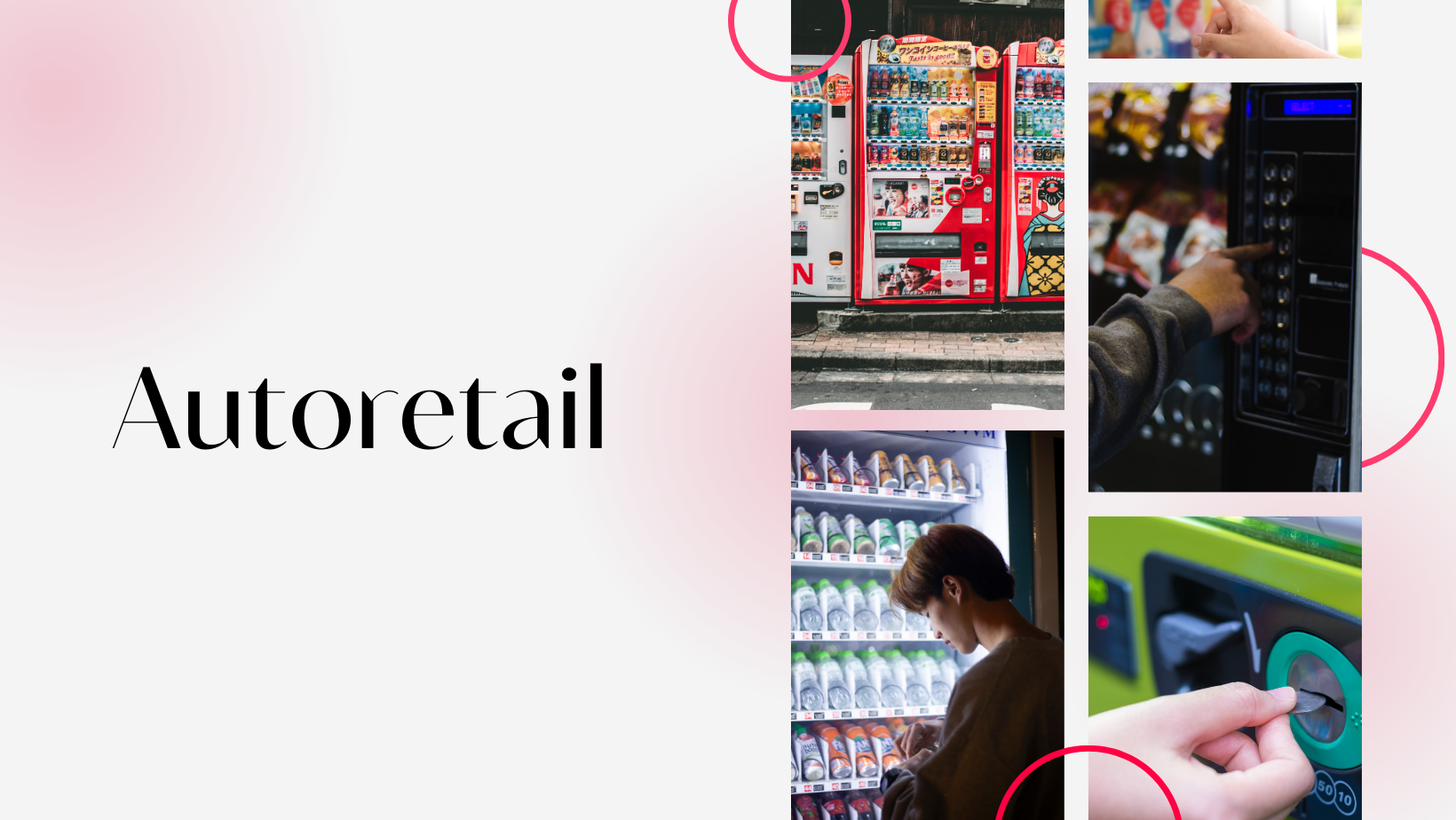The development of the retail industry in the past 10 years - The birth of automatic retail
- Nov 07 2024
- 1 views

Despite having used a vending machine before, not everyone has heard of the term ‘Autoretail’. The vending machine is actually an example of Autoretail. So what is new about this form of sales that has grown so much today?
Reading this article, you will have a comprehensive grasp of the development of the retail industry in the past century, along with the economic growth and freedom of Western society. Websass will show you how self-service retail has evolved.
1. What is Autoretail?
Automated retailing is a form of self-service retail, which is the selling model applied in supermarkets and grocery stores today.

Nowadays, most retailers don't pay much attention to sales. Store owners aren't trying to sell a single item, and they don't care what you buy. They just intend to display a wide variety of products and brands for you to choose from. It is up to you to decide whether you buy this product or that product. That is the essence of modern retail.
2. The development stages of the retail industry
A hundred years ago, there were about 500,000 small retail stores in America. At this time, store owners and service staff all took on helping customers choose products. The staff is supposed to accompany customers, understand their preferences, and be knowledgeable about every product in the store. The items for sale are placed on shelves behind the counter - completely out of the reach of the buyer. At this stage, the store staff will also be in charge of selling products.
The birth of the auto retail industry
In the early 20th century, the decline in product prices combined with the development of production, supply processes, and distribution systems made the retail industry bloom as well. At this time, human memory and understanding cannot fully absorb a large amount of information about goods. Therefore, stores have to reduce the number of selling staff. Instead of a few storekeepers in charge of loading goods on the shelves, it is the buyers who will learn about the products themselves and make their own buying decisions. Since then, modern retail appeared and has grown until this day.
A&P - The Great Atlantic & Pacific Tea Company was one of the biggest influencers at this pioneering stage. This is the first retailer in the world to reach billions of dollars in sales. John Hartford and George Hartford have launched a brand new development strategy for A&P in the retail industry. At the time, the profit margin was calculated on a dollar of the selling price. For example, product A sells for 3 USD, if it sells, it makes a profit of 1 USD, so the profit margin is 1/3.
This calculation makes it difficult for retailers to boost sales because they have to price products at a relatively high level. John Hartford had a breakthrough in his mindset: The key factor is the total profit - the interest from all products sold, not the average interest per dollar. Choosing a low selling price is parallel to a low profit-per-dollar, which could encourage customers to buy more and boost the total revenue. This strategy has been so successfully and effectively implemented that it was quickly adopted by many retail companies in their retail model. This strategy has also been spread to the suppliers, because the retailer convinces them to apply the low-price strategy, in return for an increase in total sales and total profit.
Apart from the innovation in sales, retail stores also work as a communication channel for brands to promote their products. The stores today became buyers’ destinations, where they could watch the shelves and inspect products. This brings a precious opportunity for labels to approach buyers with images and info. Subsequently, retail stores such as A&P at that time charged suppliers for in-store branding activities. Besides, Walmart, led by Sam Walton, adopted the A&P business model as well but instead of charging, he required the brands to decline the wholesale price.
Due to the drawbacks and the fee required by the retailers of branding activities, suppliers have decided to use other platforms such as Radio and TV, laying the foundation for the growth of these communication forms.
3. The MUST-KNOW factors for an effective auto retail model:
Unintentional customers
As usual, retailers prioritized the familiar customers that buy in bulk and categorized them as target customers. Customers who buy 5 or fewer items are considered passersby. However, statistics show that these customers account for nearly 50% of potential customers. So, ignoring these visitors means you ignore up to 50% of your customers.

In fact, customers buy 5 or fewer items just because they don’t want to buy in bulk at that time. They will return and buy large quantities of goods on any special occasion. Therefore, investigating the customer insight to meet the needs of these customers could create your revenue breakthrough. An example of a successful retailer is Joe Girard - a world record holder for the title “World's Greatest Salesman”, who could sell an average of 2 cars a day for more than 15 years. According to his sharing, the secret to that success is paying close attention to the needs of the buyer, researching what they really want or the problem they are facing, and solving it thoroughly.
To understand the buyers’ needs?
In self-service retailing, in order to know what buyers want, you should investigate all of your customers. So what do all buyers want? We will easily answer this question based on what customers have purchased so far.

First, you can use statistical data or observational experience. From there, you will understand which items, and products have been bought the most recently, as well as which products contribute the majority to the entire revenue. The general features of these products can be the long-term needs of shoppers.
Second, during this hectic pace of life, almost all consumers do not have abundant time or interest in thoroughly studying the targeted products. They’d prefer quick decisions, so any models allowing them to make quick decisions could benefit both the buyer and the seller. Therefore, recommendations such as 'Most customers choose this product' or 'Product A - choice of experts'… make it easier for them to decide. In short, buyers tend to follow the crowd.
Buyer's purchasing mechanism
Dr. Herb Sorensen - a leading expert in the retail industry said that buyers often unconsciously spend a default amount of time going shopping. In other words, when visiting the stores, buyers often spend their time buying around the time allowed. Even if they've finished buying the needed items but the time hasn't run out yet, they'll likely wander around the store and buy more items that impress them. This phenomenon embodies a principle: “Time can not extend, but budgets are”. If you help shoppers save time, which means that the average time it takes to buy an item is reduced, they will spend more money – buying more products to use up the allowed time duration at the market.’
Do not call out for customers!
The relentless presence and appeal of retailers with images and information could accidentally annoy customers. This approach can lead to boredom and make customers become more cautious of all information. Instead, retailers should delicately interact with buyers, acting as a companion, helping them to choose the products they need. Doing this will satisfy the natural needs of customers and incite great sympathy from them. However, this method takes time to work, it is not a short-term solution.
Conclusion:
This article has provided you with an overview of the formation and development of the modern retail industry to become what it looks like today. Websass hopes you have grasped a solid background knowledge to enter the retail market. Follow and read Web Sass' weekly blogs for regular updates on e-commerce knowledge!


